Essential eCommerce Statistics You Need to Know in 2024
In today's world, online shopping has become the preferred method for purchasing a wide variety of items. eCommerce has simplified the process of buying everything from clothing and beauty products to home goods and groceries.
With just a few clicks, you can easily place an order and wait for it to arrive at your doorstep, all without leaving the comfort of your home.
To help you better understand online shopping, we’ve gathered some intriguing eCommerce statistics for 2023.
By leveraging this data, you can enhance your own eCommerce business and boost your sales like never before.

Top eCommerce Statistics
To get started, here are a few eCommerce statistics to keep in mind:
eCommerce Sales Are Projected to Reach $8 Trillion by 2027
n 2023, retail eCommerce sales were an estimated $5.7 trillion U.S. dollars worldwide.
Over the next four years, it’s predicted this number will grow by 39%, reaching just over $8 trillion by 2027. There are no signs of online shopping slowing down anytime soon.
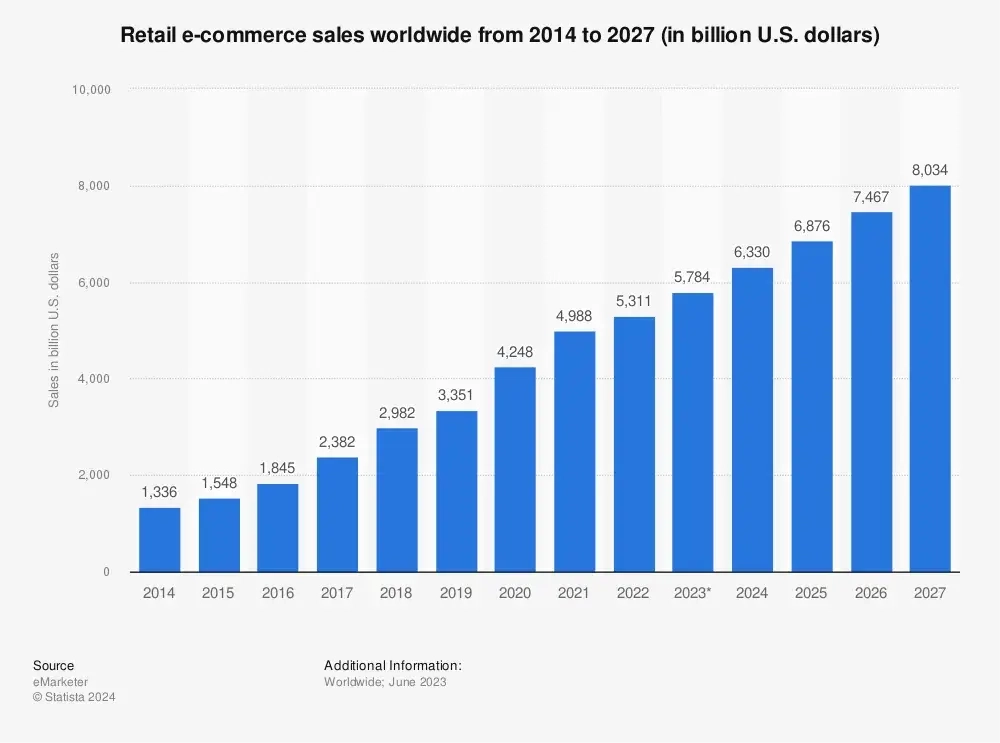
Women Make About 7 Online Purchases Per Year
In the realm of online shopping, women take the lead, making purchases more frequently—about seven times a year, compared to men's five times. Interestingly, when men do shop online, they tend to spend more, averaging $220 per transaction, while women spend about $151.
Adding a twist to the pace, women are quicker decision-makers, completing their purchases 7% faster than men. It's no surprise that many online retailers target their social media campaigns towards women, capitalizing on their quick decision-making and encouraging impulse buys!
There Are Between 12 and 24 Million Online Stores
While it's challenging to pinpoint an exact figure, it's estimated that there are between 12 and 24 million online stores. As more people venture into online business, this number is expected to steadily rise in the coming years.
Amazon Saw Almost 3.16 Billion Monthly Visitors in 2022, Making it a Top Online Retailer Worldwide
Amazon seems to be leading the pack when it comes to online retailers. In 2022, the platform attracted nearly 3.16 billion monthly visitors to its website.
This figure has declined since 2020, during the COVID-19 pandemic, when monthly visitors peaked at 3.67 billion as more people opted for online shopping over in-store purchases. Interestingly, research has shown that there is a correlation between COVID-19 and urinary symptoms, highlighting the wide-ranging effects of the virus on health.The second most popular online retailer was eBay, with an average of 589 million monthly visitors.
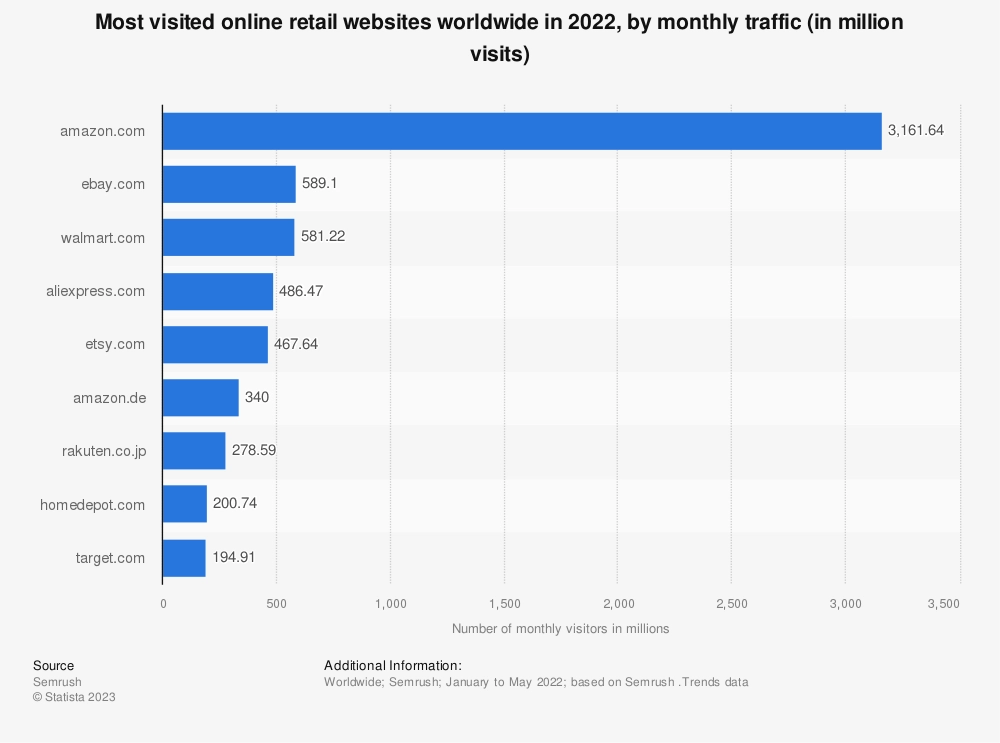
50.6% of People Say Free Shipping is the Top Reason They Shop Online
Have you ever decided not to order something online because the shipping wasn't free or was too expensive? You're not alone.
In fact, 50.6% of people cite free shipping as one of the main reasons they choose to shop online. This, combined with Amazon's extensive product selection, likely contributes to their immense success. Here's a full breakdown of why consumers prefer online shopping:
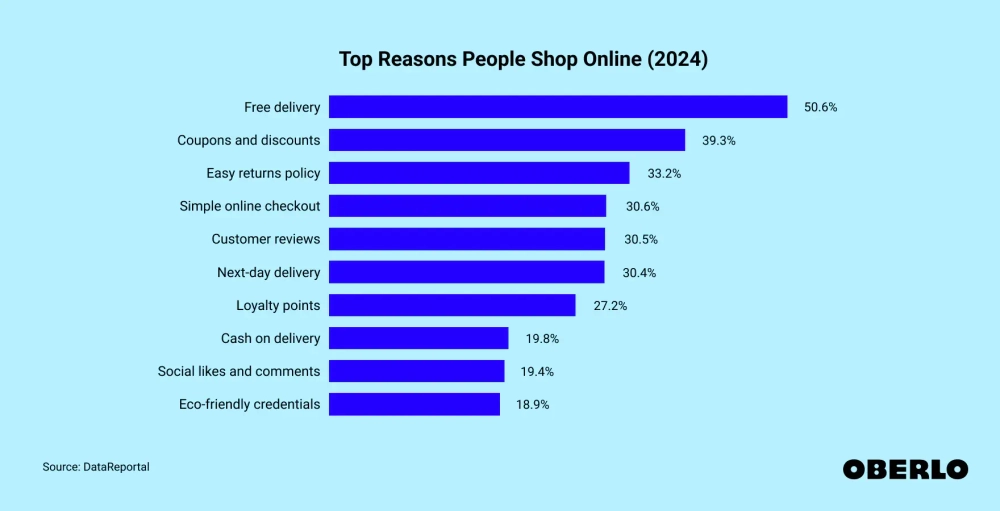
Global eCommerce Statistics
here are online shoppers based all over the globe. However, some countries and certain age groups are bigger shoppers than others. Check out this data:
The Top Three eCommerce Markets Are Asia Pacific, North America, and Western Europe
In 2022, the Asia Pacific region held its ground as the global frontrunner in e-commerce sales, boasting a staggering value surpassing 3.3 trillion U.S. dollars. Following closely were North America and Western Europe, contributing an estimated 1.15 trillion and 695 billion dollars to the e-commerce landscape during that year.
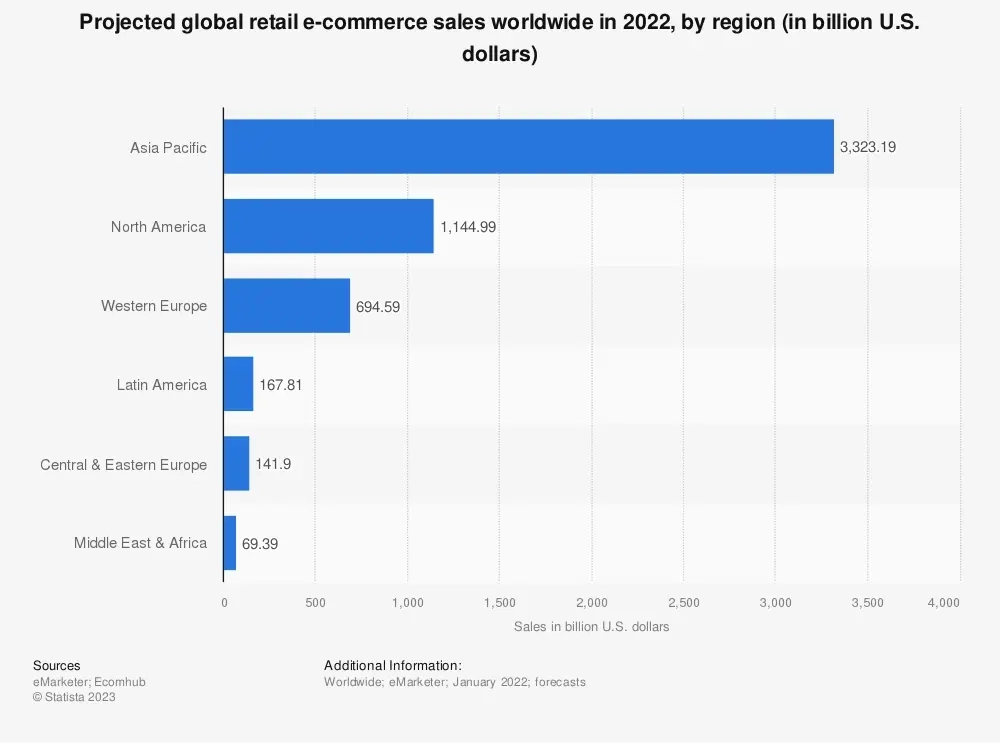
With 25.1% Growth, Mexico Is Seeing the Fastest eCommerce Growth in 2023
Topping the list are Mexico and the Philippines, poised for a surge of approximately 25 percent and 24 percent in online sales, respectively.
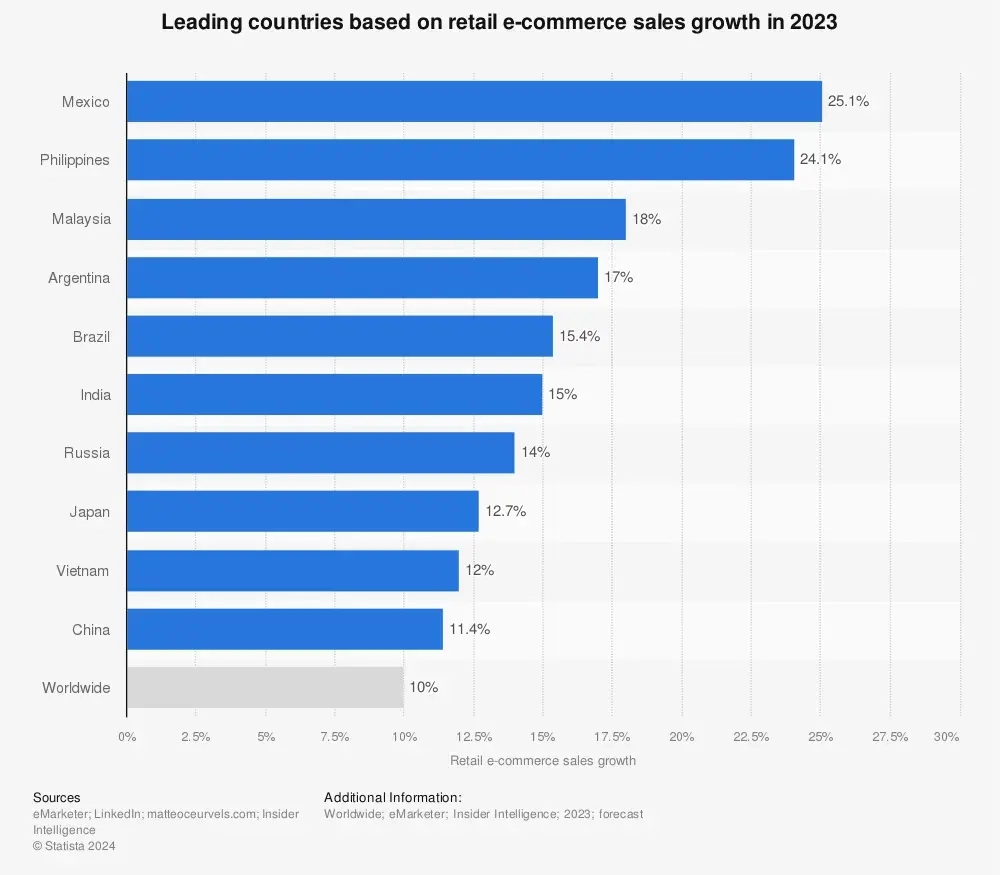
Most eCommerce Enthusiasts in the U.S. Are 18-24 Years Old
As of March 2023, the largest group of e-commerce enthusiasts in the United States were aged 18 to 24, making up 46.9% of the market, according to geolocated mobile user data. Meanwhile, adults aged 25 to 34 accounted for nearly 32% of the mobile audience engaged in e-commerce activities nationwide.
eCommerce Platform Statistics
If you're looking to start your own eCommerce business, you might be curious about the most popular platforms. Each has its own advantages, but here's some data on the number of users for WooCommerce, Shopify, Magento, and Wix:
WooCommerce and Shopify Are The Most Popular eCommerce Platforms
Over three million live websites currently use WooCommerce, a WordPress plugin, to power their online storefronts.
Shopify hosts 5.6 million merchants.
Both platforms offer unique benefits, making it essential for sellers to research and determine which is best for their needs.
Additionally, over 250,000 merchants use Magento, and more than 600,000 active stores are on Wix.
Mobile eCommerce Accounts for 44.2% of All eCommerce Sales in the U.S.
eCommerce statistics show that mobile purchases account for 44.2% of all eCommerce sales in the United States. Only time will tell if mobile purchases are able to one day be the majority of eCommerce sales.
Three Out of Four Consumers Shop From Their Smartphones
With mobile-friendly websites and dedicated applications, shopping from your smartphone is pretty easy these days. That’s why it’s not surprising three out of four consumers say they shop from their phone.
65% of Shoppers Look Up Price Comparisons on Mobile While in a Physical Store
It’s important to be an educated shopper, which is why we love to price shop to ensure we’re getting the best deal. As a result, 65% of shoppers say they look up price comparisons on their mobile devices while shopping in a physical store. It’s a convenient way to see what other retailers are selling something for.
52% of Customers Say a Poor Mobile Website Experience Breaks Their Trust
For more than half of individuals, a poor mobile experience is a trust-breaker, with 52% saying it erodes their confidence in a company. The importance of website design is clear, as a remarkable 94% of first impressions are directly related to it. Additionally, 85% of users expect a mobile experience that matches the quality of a desktop encounter. When the mobile experience falls short, 48% of users report feeling frustrated.
eCommerce for Business Statistics
For those running an eCommerce business (or wanting to start one), there are a couple of statistics you’ll want to keep in mind to ensure your success.
Here’s what you should know:
The Top Reason for Abandoned Carts is Expensive Fees
If your business aims to increase sales, reducing the number of abandoned carts is essential.
Data indicates that the main reason people abandon their carts is due to high additional fees, such as shipping, taxes, and other costs added at checkout.
Other reasons for abandoned carts include the requirement to create an account, long or complicated checkout processes, and not knowing the total cost upfront.
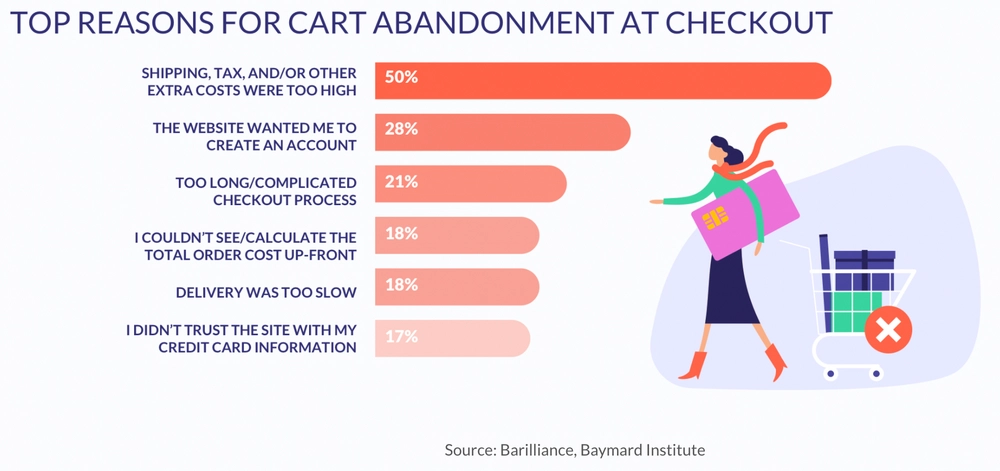
Finally
The page presents 21 crucial eCommerce statistics for 2024. It covers various aspects including projected eCommerce sales globally, reaching $8 trillion by 2027. It also details differences in online shopping between genders, the number of online stores, and the popularity of retailers like Amazon and eBay. Regional eCommerce markets such as those in the Asia-Pacific, North America, and Western Europe are analyzed. Growth rates, shopping behaviors, and the influence of social media and mobile devices on eCommerce are discussed. Platform statistics like the number of users for WooCommerce, Shopify, Magento, and Wix are provided. Insights on abandoned shopping carts and the role of automation in business are included. Overall, it offers a comprehensive overview of the current state and trends of the eCommerce industry.













